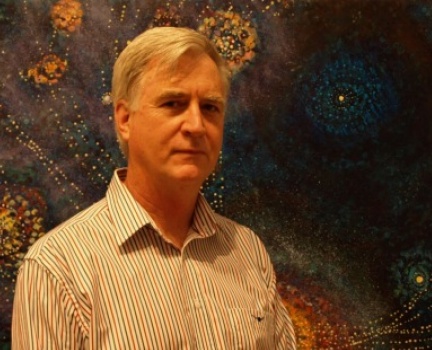Perspectives on Aboriginal Art – David Wroth, Japingka Gallery

The Early Influence
Q: David can you identify a moment or a day in your life when your interest in aboriginal art began?
David: I think there were a couple of stages. When I was a high school student, we went on an expedition. We located aboriginal sites, historical ones that had fantastic rock paintings and very ancient ochre mine sites. That was an expedition run through the geography group at school.
Later, I started going to the Kimberley in the early 1970s. At that time, it was quite difficult to find any access to aboriginal art without the help of anthropologists. In general, for Australians to see aboriginal sites, you needed special inside knowledge or some guidance before you could really see anything of the aboriginal visual culture.
I met a lot of aboriginal people in the Kimberley in the 1970s, but still found it intriguing that there was this gap between being able to access aboriginal art and being able to go through all this country that was so obviously connected with aboriginal people, populated by aboriginal people. For me, there was this search to see it but it was a very difficult thing to find.
I then did some painting in the Kimberley and later on I took a tutor’s job in Fremantle prison in about 1981, ’82. I was doing printmaking within the Fremantle prison which was the high security prison for all West Australian people who had a sentence of any significance. In that place, I certainly met lots of aboriginal people who were in Fremantle. Many of them attended the art school. There were a disproportionately a high number of aboriginal people in that prison. They really responded to the arts programs, the music programs. I started working with a whole range of aboriginal people doing printmaking initially. Some of them were from remote communities, some of them were urban people. That work gave me another insight into the aboriginal art world.
Values In Aboriginal Art
Q: Tell me, what is it about aboriginal art that you value?
David: It’s an interesting question. It is a range of things. Obviously, it has a ‘wow’ factor in the sense that it grabs you. You can’t figure out why it grabs you. It does it because of the extraordinary graphic structures that are in aboriginal culture that are not in our culture.
They have a strong impact through their design but they also seem to have the connection with very fundamental values, human values about land and about spiritual involvement of the artist, about clan connection and family connection. There are also values for the environment, for the land, for the water, for the animals. Sometimes for the totems that connect people to that world.It’s a visual appeal. It’s a spiritual appeal.
My First Painting
Q: Do you remember the first painting that you ever bought?
David: The first painting I bought was one of Jimmy Pike’s paintings. It was a painting of a waterhole with the rocky country that sort of stepped down into the water hole.It was realistic but the perspective was stretched out. It had this quality that Jimmy Pike established which was that it had this energy that radiated from the important thing that was in the painting.
It was almost as though it wasn’t a painting about a waterhole, it was a painting about the importance and the power of that water hole. All the marks I suppose from the rocks seemed to emanate out from this one place where the water is located.It’s a small painting that I bought at one of the prisoner exhibitions in those early days. That was the first painting that I bought myself.
